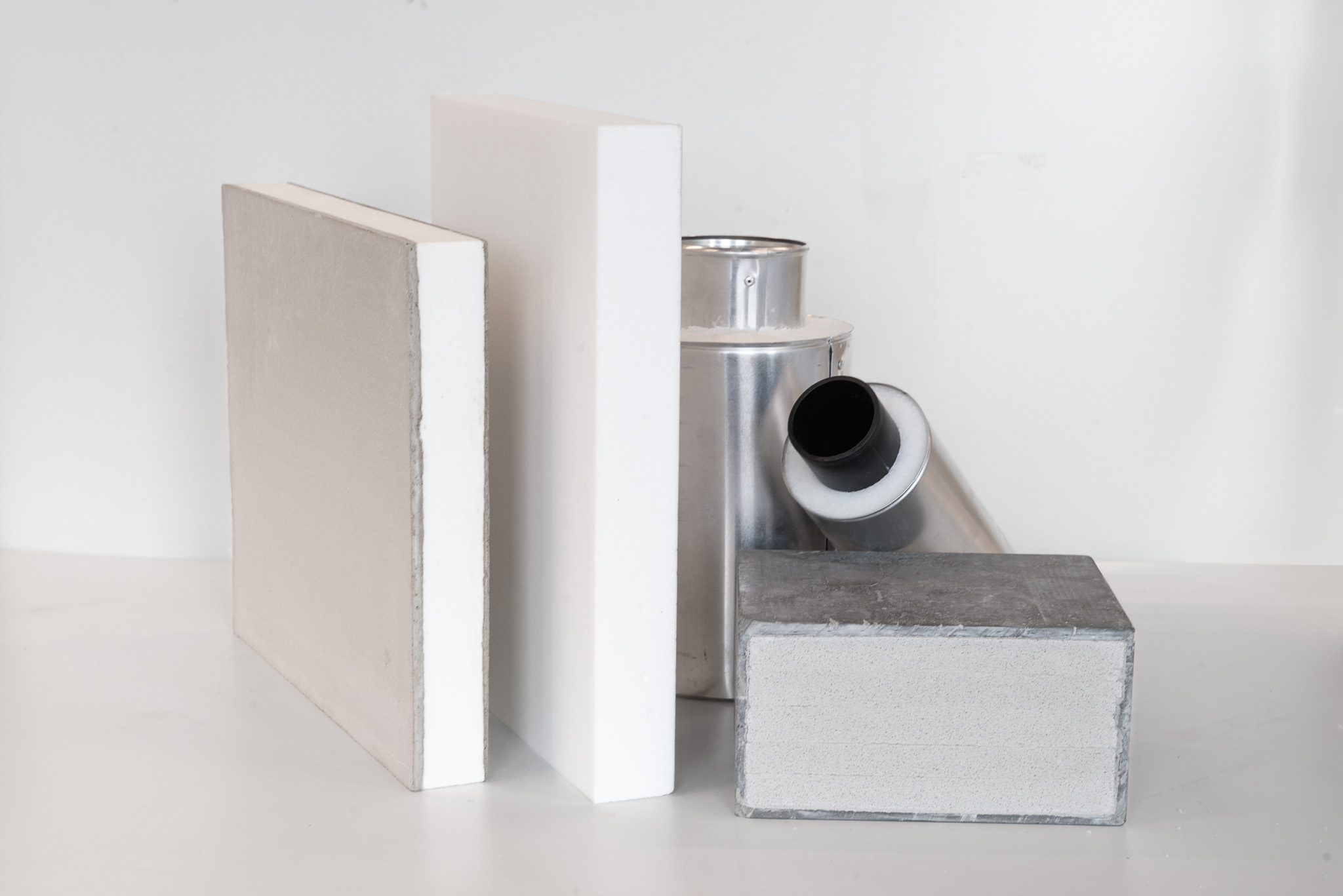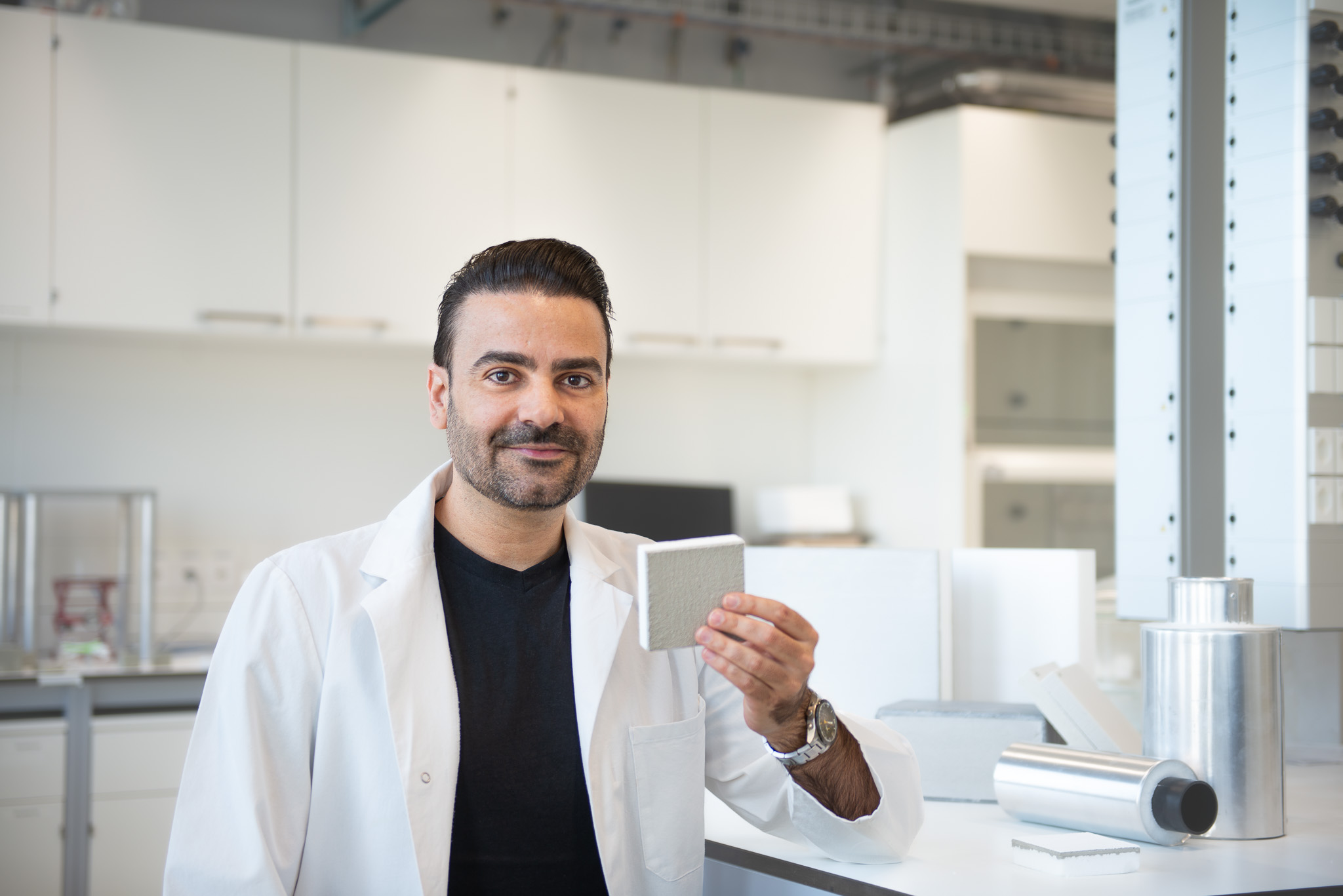A thinner thermal insulation for buildings
ETH spin-off Aeroskin Tech is developing innovative thermal insulation that uses aerogel technology to insulate buildings more efficiently and more sustainably. This new insulation has an energy-saving effect and is significantly thinner than conventional materials – a mere 10 centimetres instead of up to 30 centimetres, depending on the application.

When winter arrives and the temperature drops, we can either put on some warm clothing or turn up the heating and live with the additional costs. But what if the solution for a warm and energy-friendly home lies in the walls of the building? The more effectively buildings are thermally insulated externally, the less energy it takes to heat them internally. This is where ETH spin-off Aeroskin Tech comes in. The company is developing a new kind of thermal insulation that insulates twice as well as conventional materials. “We want to provide sustainable and efficient building insulation,” says Daniel Sanz Pont, founder of Aeroskin Tech and senior scientific researcher in the group led by Robert Flatt, Professor of Building Materials at the Department of Civil, Environmental and Geomatic Engineering at ETH Zurich.
Aeroskin Tech offers different solutions depending on a building’s needs: for example, an ultra-high performance spray plaster that is applied to the façade, ultra-high performance insulating boards that can be used as conventional products or for tailor-made prefabrication in combination with digital fabrication and 3D building scans. These prefab elements can be rapidly attached to a building’s walls. The insulating material offers two to two-and-a-half times better insulation than conventional products such as wood fibres or rock wool. What’s special about Aeroskin Tech products is that a thickness of around 10 centimetres is already enough to achieve optimum building insulation. By comparison, conventional rigid foam boards are up to 30 centimetres thick. “The requirements vary depending on whether a building is renovated or a new build and whether the new build is constructed according to Minergie standards,” says Sanz Pont.
The secret: a material from the aerospace industry
The thermal insulation produced by the ETH spin-off is based on an aerogel. These materials were originally used in the aerospace industry as high-performance insulators for electronics and other sensitive components. “When I began studying aerogels some 15 years ago, they weren’t very common. But I quickly realised their potential for applications such as the thermal insulation of buildings,” says Sanz Pont, whose doctorate is in aerogel composites.
“An aerogel is essentially a dried gel. Unlike normal gels, however, it does not collapse when dried but maintains its volume. It has a nanoporous structure,” explains Sanz Pont. This structure is ideal for insulation. Conventional insulating materials are also highly porous, consisting of up to 90 percent air in some cases, where heat is mostly transmitted by collisions between air molecules. In a nanostructure, however, the pores are so small that the air molecules collide with the pore walls more often than they do with each another. “This is called the Knudsen effect,” says Sanz Pont. “It’s what makes aerogels the best thermal insulators of all.” This drastically reduces the heat flow from the building’s interior to the outside, for example. In a dry aerogel, the air molecules are more isolated from each other. Thanks to this effect, the hot air remains inside the house and cannot escape through the material to the outside, as it is prevented from doing so by the reduced convective effect inside the aerogel.

From niche to global market
Sanz Pont grew up in Mexico but is originally from Spain. He studied architecture and later returned to Spain, where he continued his education, graduating with two master’s degrees: one in building physics and a second in quality and risk management. During his doctoral studies in materials science at ETH Zurich, he explored the question of how best to mix and process granulated silica aerogels. The researcher quickly recognised their potential for the construction industry, stating: “Entrepreneurship is very common in my family. It seemed obvious to me, therefore, to found an ETH spin-off so that I could bring my research to market,” says Sanz Pont.
So far, Aeroskin Tech has developed various prototypes of spray insulation, including a full-scale demonstrator and insulation boards, and had these products validated by traders and construction companies. A crucial element in the development has been the award of project grants and public funding, such as from the Swiss Climate Foundation and the Swiss Federal Office of Energy Pilot and Demonstration programme. The next step is to build a pilot plant in order to scale up to industrial production with the aim of bringing their products to market within one or two years.
The market has huge potential, with millions of cubic metres of insulation materials being used each year. In this context, Switzerland makes a very attractive production site: “Our location in the heart of Europe works in our favour. What’s more, you need two or three times more insulating materials in Switzerland to meet the legal requirements than in other countries such as Spain,” explains Sanz Pont. That’s a good starting point for gaining a foothold in the market.

Soon to take the next big step
Unlike other ETH spin-offs, which are typically led by two or more founders, Sanz Pont dared to go it alone with Aeroskin Tech. “My multifaceted education means I bring together many different skills. I’ve also had coaching and expanded my education and experience in business management. Nevertheless, I have been supported by outstanding professionals at ETH during all these years of development” says Sanz Pont, who has built up a network and works closely with other companies when there is a need for special expertise. Nevertheless, the decision to run the company alone is very challenging: “I really enjoy big challenges, but I also surround myself with highly experienced mentors whom I can learn more quickly from. With that in mind, I want to prepare for the next step carefully. Aeroskin Tech is looking for investors who dare to take on big challenges so that we can begin producing on an industrial scale,” says Sanz Pont.
His role at Aeroskin Tech, in conjunction with his teaching at ETH, sounds like it must involve long working hours. Does he still have time for hobbies? “You might think that I live and sleep in the office. But that’s not the case. It’s important to me to strike a healthy balance,” he says. “I like to do sports, whether it’s basketball, football or winter sports such as snowboarding. I also enjoy spending time with my wife, going for walks and bike rides. What we enjoy the most is traveling the world.” These activities help Sanz Pont recharge his batteries so that he can usher in the next generation of thermal insulation with Aeroskin Tech.